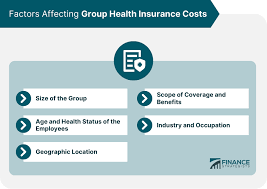Have you been dreaming of can I move to canada to the Great White North? Canada’s stunning landscapes, diverse culture, and high quality of life make it a desirable destination for many. But before you pack your bags, let’s explore what it takes to make Canada your new home.
Understanding the Basics
1. Determine Your Eligibility: Moving to Canada involves understanding the various immigration pathways available. Whether it’s for work, study, family reunification, or seeking refuge, each pathway has its own criteria and requirements.
2. Know the Visa Options: Canada offers different types of visas and permits, including permanent residency, work permits, student visas, and more. Research which one aligns with your intentions and qualifications.
3. Assess Your Skills and Qualifications: Canada values skilled workers and professionals. Explore the Comprehensive Ranking System (CRS) used in the Express Entry system to determine your eligibility based on factors like age, education, work experience, and language proficiency.
Exploring Residency Options
1. Express Entry System: This system manages applications for skilled workers aiming to become permanent residents. It includes the Federal Skilled Worker Program, the Federal Skilled Trades Program, and the Canadian Experience Class.
2. Provincial Nominee Programs (PNPs): Each province and territory in Canada has its own immigration programs tailored to its specific labor market needs. Research PNPs to see if your skills match any in-demand occupations.
3. Family Sponsorship: If you have family members who are Canadian citizens or permanent residents, they may be able to sponsor your immigration.
Navigating the Application Process
1. Gather Required Documents: Applications often require extensive documentation. Be prepared with identification, proof of funds, educational credentials, and more.
2. Language Proficiency Tests: English and French are Canada’s official languages. Depending on the program, you may need to take language proficiency tests like IELTS or CELPIP (English) or TEF (French).
3. Seek Professional Guidance: Consider consulting immigration lawyers or consultants to ensure accuracy and completeness in your application.
Final Steps and Considerations
1. Medical Examinations and Background Checks: Depending on the visa type, you might need to undergo medical examinations and provide police clearance certificates.
2. Plan Your Settlement: Research the city or province you’ll be moving to, understand the cost of living, housing options, healthcare, and employment opportunities.
3. Patience Is Key: Immigration processes can take time. Be patient and stay updated on your application status through the relevant immigration authorities.
Moving to Canada is an exciting prospect, but it requires careful planning and adherence to immigration regulations. By understanding the options available and following the necessary steps diligently, you can turn your dream of living in Canada into a reality.
Disclaimer: This blog post is for informational purposes only and should not be considered legal advice. Immigration laws and regulations can change, so always refer to official government sources or consult with a qualified immigration professional for the most up-to-date information.
